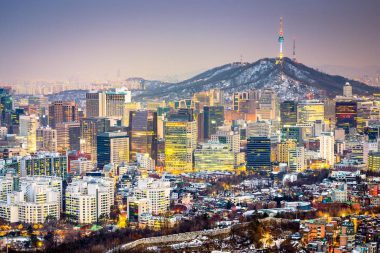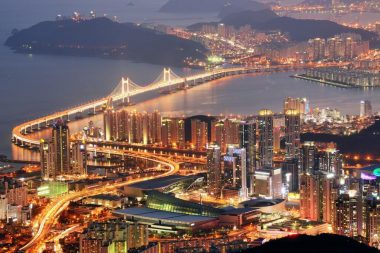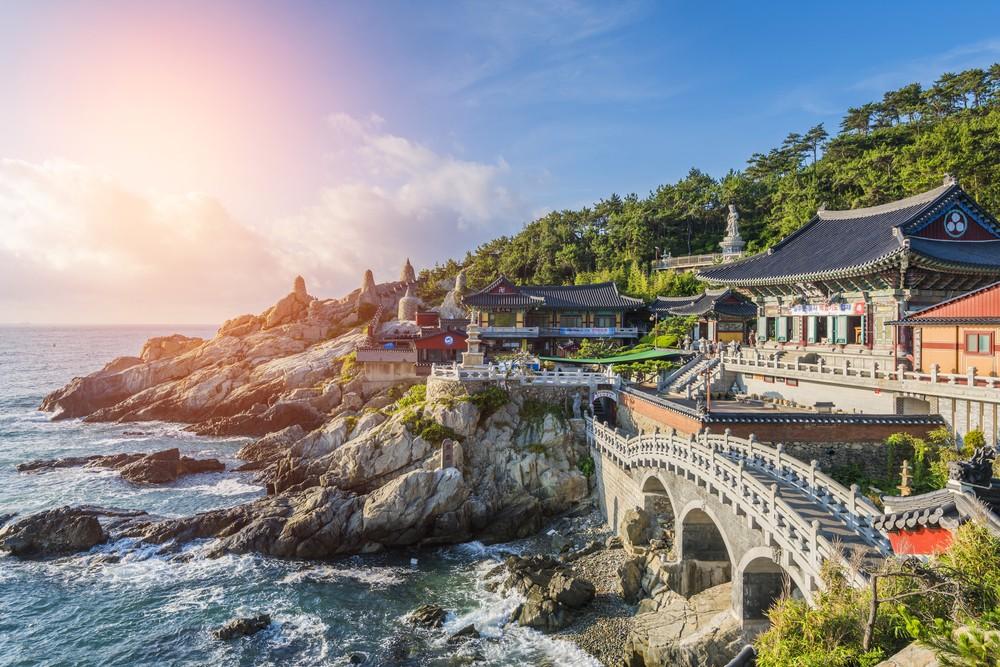It is a special life experience to submit to the rites of the host Buddhists in a South Korean monastery and to observe the everyday life of the monks. Four hundred kilometers southeast of the metropolis of Seoul also have the chance to achieve the enlightenment of the dawn. And this in the sense of the word, because in the temple Golgulsa in Kyongju there is bed rest at 9 p.m., but the night is already over at three o’clock when the pious men of the monastery gather for the first morning prayers. But when the first rays of the sun unfold their splendor over the picturesque Chungjuho Lake, none of the guests regrets getting up so early. Because this can be one of the visual highlights of a trip through South Korea. A journey across a varied peninsula between two seas.

Korea is a country divided into two parts with political, social and societal contrasts that could hardly be greater. The north is ruled by an aging communism, while the south has risen to become an economic world power. Hardly anyone books a trip through the last remaining dictatorship of Stalinist influence, while south of the 38th parallel and the border river Yalu, which separates the north from the south, holidaymakers experience the historic “Land of the Morning Calm” on their round trip by bus or rental car and at the same time a successful product of the so-called “tiger states” in Asia.
In the lively capital Seoul , holidaymakers immerse themselves in the dazzling world of an Asian metropolis. Ten million people live here, but when they leave the canyons under the skyscrapers, they soon find themselves in a landscape of lovely valleys, raging rivers, high mountain ranges and many deep forests. Seoul is a melting pot of surprises, with a neon-lit entertainment district, the historic tombs of past royal dynasties, and the palaces that UNESCO has added to its World Heritage List.
Sacred to the Koreans is their Chongmyo Shrine in Seoul, where people worship their ancestors and are aware that they are very close to their deceased. Chongmyo Shrine is also dedicated to the Joseon Dynasty, which ruled Korea for a long period of history between 1392 and 1910. The capital Seoul is not only a high-tech Eldorado, but also convinces with its gardens at the Gyeongbokgung Palace. They are oases of silence in an often very noisy city.

Holidaymakers should get used to some things during their round trip through South Korea. This is especially true of kimchi, a fermented cabbage that simmers next to the cash register in all restaurants and even fashion stores. This typical Korean dish is something like a culinary matter of course for the people in this country. You have to like kimchi or not. But anyone who has tried the Korean version of German sauerkraut can hardly imagine that it could find its way into European eating habits.
South Korea is framed by the Yellow Sea to the west and the Sea of Japan to the east. In 1946, the country underwent the transformation from a centuries-long kingdom and colony of Japan to a republic. On the island of Jeju with its subtropical climate, the largest lava cave system in the world is fascinating. But also the Cheonjeyeon waterfall, which the Koreans have christened “Pool of the King of Heaven”. Jeju is the typical “wedding island” for the people of the country, and those who spend their holidays there meet numerous young couples during their honeymoon.
Not far from Gyeongju, holidaymakers experience a gem of the history of this country on their round trip. The Buddhist temple Bulguksa has its roots in the 8th century and is the creative and cultural crowning glory of the kingdom of the Silla. The temple with its grotto is considered a natural treasure of Korea, while the Hwasong Fortress with its six-kilometer wall is the highlight of any round trip.
Travel information South Korea
| Capital | Seoul |
|---|---|
| Form of government | Republic semi-presidential system |
| Currency | Won (KRW) |
| Area | approx. 100,210 km² |
| Population | approx. 51,700,000 (2018) |
| Languages | Korean |
| Electricity grid | 110/220 volts, 60 Hz |
| Area code | +82 |
| Time zone | UTC+9 |


